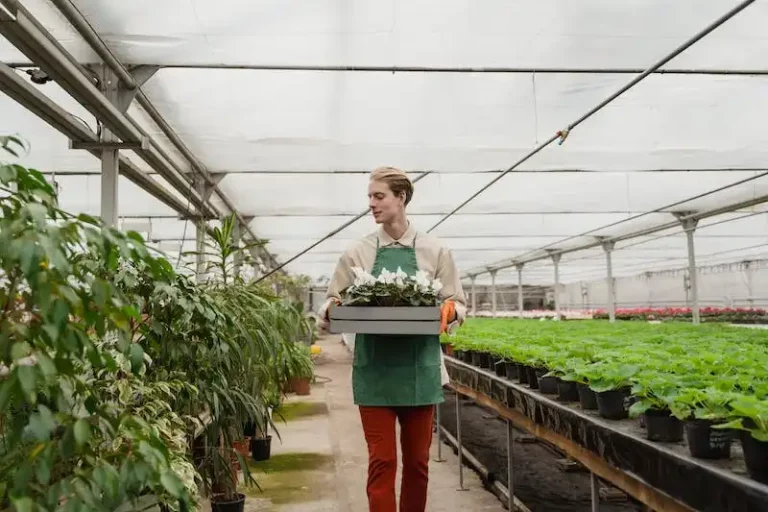Growing parsley, a titan in the herb world, can be a rewarding experience for any plant enthusiast. This easy-to-grow plant is a common choice for both indoor and outdoor growers because of its deep green leaves and flavorful taste. From curly to flat-leaf and even a French-inspired variety, parsley comes in different types to suit every palate. Whether you are a beginner or an experienced gardener, this article will guide you through the process of growing and caring for parsley.
When it comes to planting parsley, one of the first things to consider is the choice between growing it indoors or outdoors. Parsley usually prefers moist and well-drained soil, so make sure to choose a sunny spot in your garden or a pot with good drainage if planting indoors. It can be started from seeds or purchased as a young plant from local nurseries or online sites. With a planting timeline that spans from early spring to late summer, parsley can be easily propagated for continuous harvest.
Proper care for parsley includes regular watering to maintain moisture levels in the soil, especially during the hotter months. However, be cautious not to overwater as parsley can be susceptible to diseases such as powdery mildew. To ensure the parsley plant gets enough nutrients, it is recommended to feed it with a balanced fertilizer every few weeks.
Harvesting parsley can begin when the plant reaches a mature stage, usually around 70-90 days after planting. The outer green leaves can be picked first, allowing the inner leaves to continue growing. If you have an abundance of parsley, you can store it by air drying or freezing it for later use. Parsley’s strong flavor makes it a versatile herb that can be used fresh or dried in a variety of dishes.
One special feature of parsley is its ability to attract swallowtail butterflies, making it a beautiful addition to any garden. Also, parsley is safe for pets, so there’s no need to worry about your furry friends getting close to the plant. If you have any questions about growing parsley, there are plenty of resources available online, including gardening forums and websites dedicated to herb enthusiasts. So go ahead and start your parsley-growing journey today!
“Parsley is a plant that requires minimal maintenance, making it an ideal herb for both beginner and experienced gardeners.” – Sharon, plantitor.com
How to Grow Parsley Outdoors
When it comes to growing parsley outdoors, there are a few key factors to consider. Parsley thrives in full sunlight, so it’s important to choose a location that receives at least 6 hours of direct sunlight each day. Additionally, parsley prefers moist but well-drained soil, so make sure to water it regularly to keep the soil consistently moist but not waterlogged.
While parsley loves sunlight, it can also tolerate some shade, especially in warmer climates. If you live in an area with hot summers, providing some shade for your parsley plants can help prevent them from overheating.
Parsley is a low-maintenance plant that doesn’t require a lot of fuss. Once you’ve selected the right site and have your lighting and moisture levels sorted, you can begin planting. Start by selecting the type of parsley you want to grow. The two most common varieties are curly parsley and flat-leaf parsley. Curly parsley is usually the preferred choice for garnishing, while flat-leaf parsley has a stronger flavor and is great for cooking.
Before planting your parsley seeds or seedlings, make sure to prepare the soil by removing any weeds and adding organic matter like compost or well-rotted manure. Parsley seeds can take a while to germinate, so be patient and keep the soil moist until you see the seedlings sprout.
When it comes to planting parsley, it’s important to give the plants enough room to grow. The parsley plants can get quite tall, so spacing them at least 6 to 8 inches apart is recommended. You can also grow parsley in containers or pots if you’re short on space.
Parsley is relatively pest-free, but there are a few common problems that you may encounter. Aphids can sometimes be a problem, so keep an eye out for these tiny insects and take action if they appear. Powdery mildew, a fungal disease, can also affect parsley plants, especially in humid environments. To prevent powdery mildew, make sure to provide good air circulation and avoid overhead watering.
If you’re growing parsley for its culinary uses, you’ll want to harvest the leaves when they’re at their peak flavor. The outer leaves can be picked first, allowing the inner leaves to continue growing. To harvest, simply use a pair of scissors or sharp pruners to snip off the leaves you need.
It’s also worth mentioning that parsley is a favorite food for swallowtail butterfly caterpillars. If you notice these caterpillars on your parsley plants, consider leaving them be or relocating them to another part of your garden. Supporting pollinators can be a great way to contribute to the health and biodiversity of your garden.
In colder climates, parsley can be overwintered by planting it in pots and bringing it indoors before the first frost. This allows you to continue enjoying fresh parsley throughout the winter months.
In conclusion, growing parsley outdoors can be a rewarding experience. By following these steps and providing the right lighting, moisture, and care, you can have a thriving parsley plant in your garden. Whether you’re using it as a flavoring for your favorite dishes or to add a touch of French-inspired elegance to your garden, parsley is a versatile and reliable plant that is well worth growing.
| Things to consider when growing parsley outdoors: |
|---|
| 1. Select a sunny location that receives at least 6 hours of direct sunlight each day. |
| 2. Provide regular watering to keep the soil moist but well-drained. |
| 3. Consider providing some shade in warmer climates to prevent overheating. |
| 4. Choose between curly parsley and flat-leaf parsley based on your culinary preferences. |
| 5. Prepare the soil before planting by removing weeds and adding organic matter. |
| 6. Give the parsley plants enough room to grow, spacing them at least 6 to 8 inches apart. |
| 7. Be aware of common pests and diseases like aphids and powdery mildew. |
| 8. Harvest parsley leaves as needed, starting with the outer leaves and allowing the inner leaves to continue growing. |
| 9. Consider supporting pollinators by leaving swallowtail butterfly caterpillars on your parsley plants. |
| 10. In colder climates, consider overwintering parsley by bringing it indoors or planting it in pots. |
TABLE OF CONTENTS
1. Overview
1.1 Introduction to parsley
1.2 Types of parsley
2. Growing Parsley
2.1 Selecting the right parsley seeds
2.2 Preparing the soil and planting parsley
2.3 Providing the right lighting and moisture
2.4 Supporting parsley growth with ollas
2.5 Watering and fertilizing parsley
2.6 Harvesting parsley
3. Uses of Parsley
3.1 Culinary uses of parsley
3.2 Parsley as a garnish
3.3 Parsley in healthy dishes
4. Parsley Care
4.1 Checking and controlling pests and diseases
4.2 Preserving parsley in the kitchen
4.3 Storing parsley seeds for future use
5. Common Issues and Solutions
5.1 Dealing with powdery mildew
5.2 Troubleshooting weak parsley growth
5.3 Managing pests attracted to parsley
6. Parsley FAQs
6.1 How long does parsley take to grow?
6.2 Can parsley be grown indoors?
6.3 Can pets safely consume parsley?
7. Conclusion
7.1 Recap of key steps and tips for growing parsley
Ways to Grow Parsley Outdoors
If you have a sunny spot in your garden, growing parsley outdoors is a great way to have a fresh supply of this tasty herb. Parsley is a cool-season plant that can tolerate light frost, making it a perfect addition to your outdoor setup. Here are a few ways to grow parsley outdoors:
1. Site Selection: Choose a location that receives at least 4-6 hours of direct sunlight each day. Parsley can also tolerate some light shade, but it will thrive better in full sun.
2. Planting: Start by selecting healthy parsley plants from a nursery or grow them from seeds. Plant the parsley in well-draining soil with a pH level of 6-7. Dig a hole that is about 2-4 inches in depth and space the plants 6-8 inches apart.
3. Water: Parsley plants prefer consistently moist soil, so make sure to water them regularly. Avoid overwatering as it can lead to root rot. Water the plants thoroughly whenever the top inch of soil feels dry to the touch.
4. Companion Planting: Planting parsley alongside other herbs like basil or cilantro can help improve its flavor and protect it from pests. Parsley is a great companion to many herbs and vegetables, so do some research to find out which ones will work best for your garden.
5. Care and Maintenance: Keep an eye out for common problems like aphids and powdery mildew. If you spot any issues, use natural remedies or organic insecticides to control them. Regularly prune the parsley to encourage compact growth and harvest the outer leaves when the plant is mature enough.
6. Harvesting: Parsley can be harvested throughout the growing season, but be careful not to remove too many leaves at once. It’s usually best to harvest the outer leaves while leaving the central ones to continue growing. This way, your parsley plant will keep producing fresh leaves for a longer time.
7. Seasoning and Garnish: Parsley is a versatile herb that can be used in a variety of dishes. Add fresh parsley leaves to salads, soups, stews, and sauces for a burst of flavor. It also makes a beautiful garnish for your culinary creations.
By following these steps, you will become a master at growing parsley outdoors. Experiment with different types of parsley to add a colorful touch to your garden, and enjoy the fresh taste of this classic herb in your cooking!


